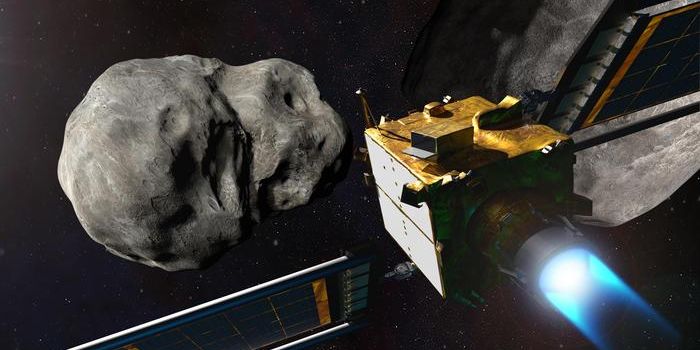In a world first, chemical engineers have taken a different look at a question astronomers and biologists have been pondering for decades: Does Saturn moon Titan host life?
Of course, Titan is way too hostile for life as we know it to eke out an existence - it is a frigid world awash with liquid methane and ethane and a noxious atmosphere devoid of any liquid water. But what if there is a different kind of biology, a life as we don't know it, thriving on the organic chemistry that is abundant on Titan's surface?

Normally, astrobiologists combine what we know about Earth's biosphere and astronomers zoom in on other stars containing exoplanets in the hope that some of those alien world have some similarities to Earth. By looking for small rocky exoplanets orbiting inside their star's habitable zones, we are basically looking for a "second Earth" where liquid water is at least possible. Where there's liquid water on Earth, there's inevitably life, so scientists seeking out alien life "follow the water" in the hope of finding life with a similar terrestrial template on other planets.
Titan, however, does not fall into this category. It's about as un-Earth-like as you can get. So, chemical molecular dynamics expert Paulette Clancy, astronomer Jonathan Lunine and James Stevenson, a graduate student in chemical engineering, all from Cornell University, Ithaca, N.Y.,have looked at Titan in a different light and created a theoretical model of a methane-based, oxygen-free life form that could thrive in that environment.There is no known template for this kind of life on Earth, but the researchers have studied what chemicals are in abundance on Titan and worked out how a very different kind of life could be sparked.
As a collaborator on the NASA/ESA Cassini-Huygens mission, Lunine, Professor in the Physical Sciences in the College of Arts and Sciences' Department of Astronomy, has been fascinated with the possibility of methane-based life existing on Titan for some time, so he joined forces with Clancy and Stevenson to see what this hypothetical life form might look like.
In their research published in the journal Science Advances on Feb. 27, the researchers focused on building a cell membrane "composed of small organic nitrogen compounds and capable of functioning in liquid methane temperatures of 292 degrees below zero (Fahrenheit; or 94 Kelvin)," said a Cornell press release. On Earth, water-based molecules form phospholipid bilayer membranes that give cells structure, housing organic materials inside while remaining permeable. On Titan, liquid water isn't available to build these cell membranes.
"We're not biologists, and we're not astronomers, but we had the right tools," said Clancy, lead researcher of the study. "Perhaps it helped, because we didn't come in with any preconceptions about what should be in a membrane and what shouldn't. We just worked with the compounds that we knew were there and asked, ‘If this was your palette, what can you make out of that?'"
The researchers were able to model the ideal cell that can do all the things that life can do (i.e. support metabolism and reproduction), but constructed it from nitrogen, carbon and hydrogen-based molecules that are known to exist in Titan's liquid methane seas. This chemical configuration gives this theoretical alien cell stability and flexibility in a similar manner to Earth life cells.
"The engineers named their theorized cell membrane an ‘azotosome,' ‘azote' being the French word for nitrogen. ‘Liposome' comes from the Greek ‘lipos' and ‘soma' to mean ‘lipid body;' by analogy, ‘azotosome' means ‘nitrogen body.'" - Cornell
"Ours is the first concrete blueprint of life not as we know it," said lead author Stevenson, who also said that he was inspired, in part, by Isaac Asimov, who wrote the 1962 essay "Not as We Know It" about non-water-based life.
Having identified a possible type of cell membrane chemistry that functions in the Titan environment as a cell on Earth might, the next step is to model how such a hypothetical type of biology would function on Titan. In the long run, we might also be able to model what kinds of observable indicators we should look for that might reveal that alien biology's presence.
That way, should a mission be eventually sent to Titan's seas, sampling the chemical compounds in the soup of organics may reveal a biology of a very alien nature.









